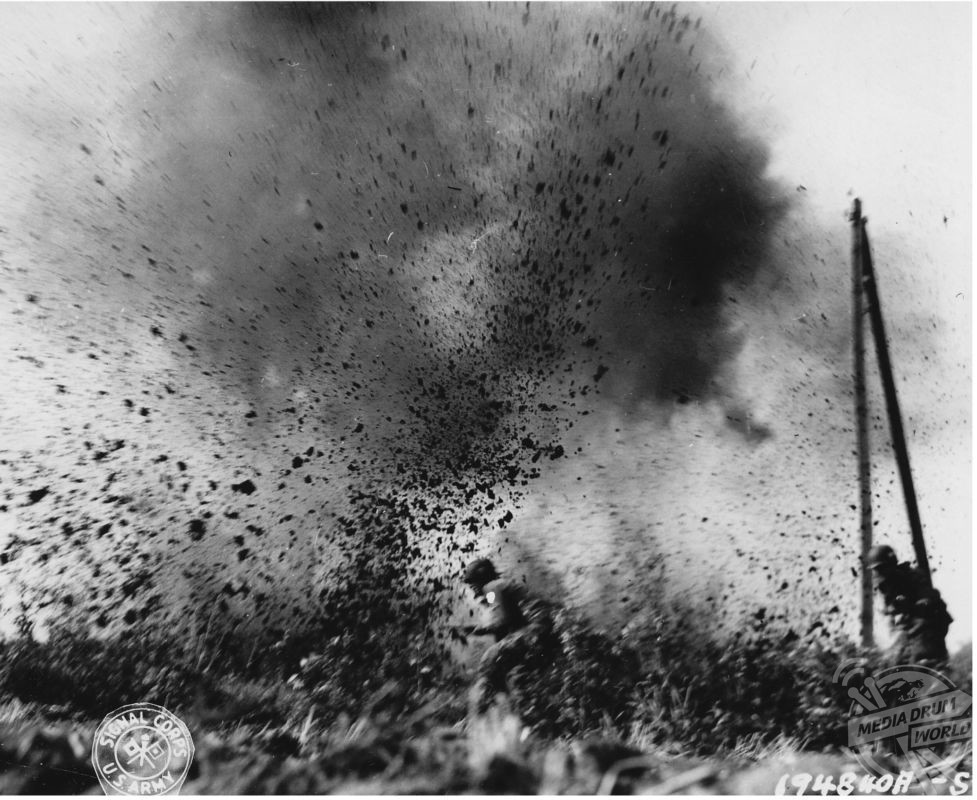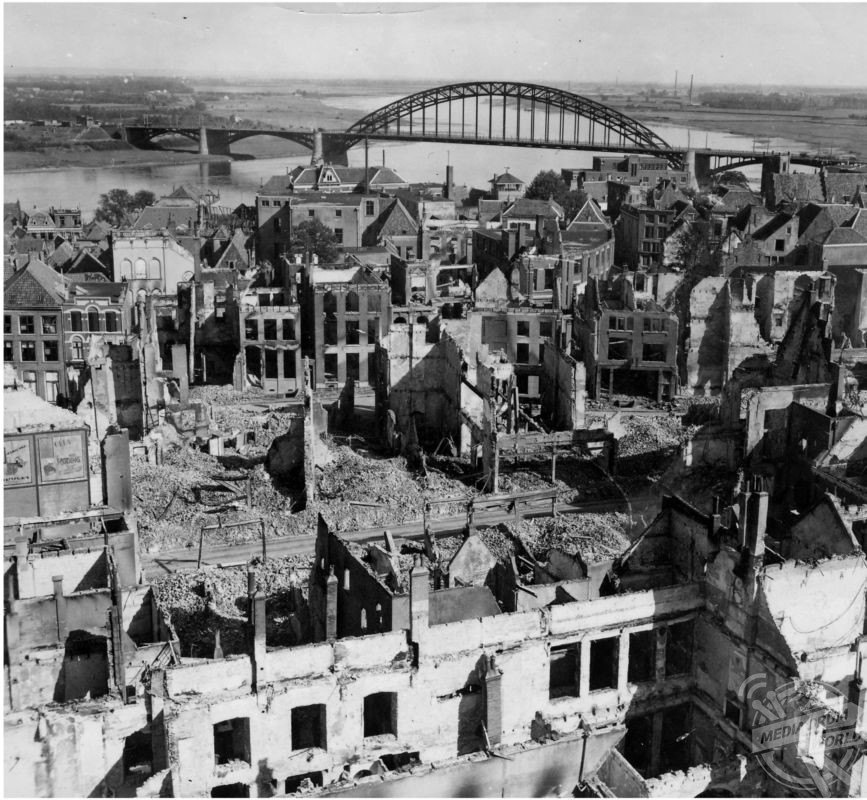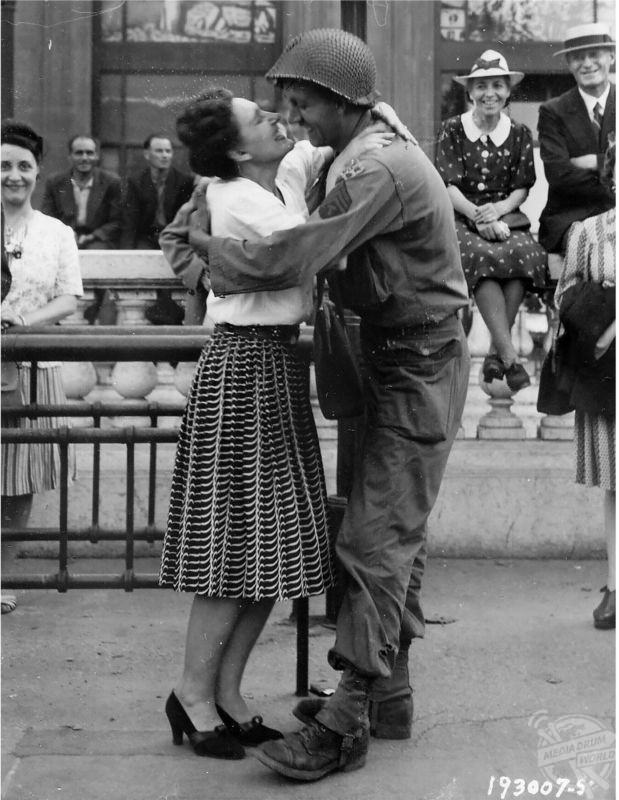
By Alex Jones
FOLLOWING their heroics at the Normandy Landings, a stunning new book captures the fierce resistance the Allied Forces came up against whilst pushing the Nazis out of France.
Harrowing pictures from the latter stages of World War Two include US soldiers running into battle at the exact moment a shell bursts right next to them, a field full of abandoned German helmets after a wholesale surrender, and a sickening crash landing for an allied paratrooper who was fighting for a free Europe.
Another incredible image portrays the fearful yet stoic expression of a 24-year-old tank operator, captured just days before he was killed in action, and the gutted landscape of a Dutch town ravaged by constant air raids.

Historian Brooke S. Blades’ new book The Americans from Normandy to the German Border: Rare Photographs from Wartime Archives offers an enthralling, chilling, and gruesome insight into what the American soldiers faced following the D-day landings in the summer 1944, 75 years ago.
After tens of thousands of courageous allied soldiers tackled the terrifying prospect of landing on France’s heavily fortified northern shore and managed to break through the Nazi’s defences, the Allied Forces were then tasked with beating the Third Reich troops back to Germany.
“This book takes up the story of the massive American contribution to the campaign in north West Europe during the autumn and early winter of 1944,” explained Blades.
“Following the dramatic breakout from the Normandy bridgehead, events moved fast with the liberation of Paris quickly following and the Allies closed in on the German border.

“But the apparent collapse of the Nazis was illusory. As lines of communication lengthened and German resistance stiffened, the Allied High Command was divided on the right strategy. The ill-fated Operation Market Garden brought home the reality that the war would continue into 1945. The Siegried Line was penetrated and Aachen fell but the American First Army suffered heavy casualties in the Hurtgen Forest. As winter set in, the third Army crossed the Moselle River and into the Saar.
“The stage was set for the costliest battle in American history – The Battle of The Bulge.”
Following D-Day, the Allied Forces were locked in fierce, close encounter fighting in northern France in a 6-week skirmish known at the ‘battle of the hedgerows’ due to the intimate fighting theatre. In particular larger communities such as Caen put up dramatic resistance and it took a huge amount of manpower and effort to shift the entrenched German defenders. More blood would be shed and a huge number of German prisoners of war interned following the formation of the ‘Falaise Pocket’ – a huge swath of Third Reich troops and their vehicles who ended up trapped due to a rapid pincer movement from the Allied Forces.

Blades’ book also looks at other key events in the autumn and winter of 1944, including the liberation of Paris, Operation Dragoon (The ‘Second D-Day’ in the south of France), and the costly ‘Operation Market Garden’ – where Allied forced attempted to penetrate Germany through the Netherlands but were thrown back by a robust German defence (as portrayed in the classic film A Bridge Too Far).
Including approximately 18,000 involved on D-Day itself (6 June), during the Battle of Normandy over 425,000 Allied and German troops were killed, wounded or went missing overall. This figure includes around 210,000 Allied casualties, with nearly 37,000 killed amongst the ground forces and a further 16,000 deaths amongst the Allied air forces. German losses of around 200,000 were killed or wounded; a further 200,000 were taken prisoner during the Campaign. Looking just at the fierce fighting which took place around the Falaise Pocket (or Falaise Gap) in August 1944, the German Army suffered losses in excess of 90,000 men, including those taken prisoner.






